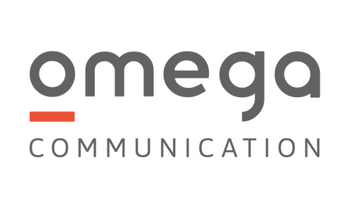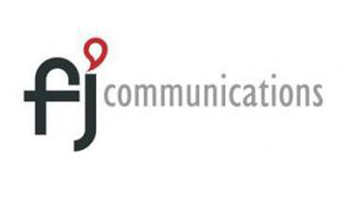Welcome to the era of hybrid events – make the most of it!
“Hybrid” might just be one of the key defining words of 2021. Hybrid work, hybrid school, shopping that combines online and in-store experience. Not to mention hybrid cars, which continuously grow in popularity. And now we are also entering the era of hybrid events, which are believed to be the perfect combination of what live and virtual events have to offer.
From offline to online – how the event organizers adapted to COVID-19
We all know it, we’ve all been there – the COVID-19 pandemic has changed the world drastically, in many ways. In the PR sector, one of the most affected areas of our work has been, without a doubt, organizing events as a part of the communication strategy. Limitations, restrictions and the ever-changing global situation forced many of us to postpone or entirely cancel conferences, workshops and exhibitions – practically overnight. The severity of the situation meant that, if we wanted to keep those events as an important communication channel for our clients, we needed to quickly – and efficiently – adapt to those new conditions. And for the most part, that meant moving our events into the virtual world.
The concept of virtual events is not a new one, but it was never as popular and omnipresent as it is today. A recent report by Grand View Research indicates that the global virtual events market size is estimated to reach USD 504.76 billion by 2028, which amounts to an estimated 24% of annual growth rate[1]. According to another research, by Wild Apricot, the number of organizations planning virtual events doubled in 2020[2]. All of this means that online events have become the norm. Their organizers have learned to make them happen in an effective way that is also attractive for the audience, and the participants have learned to use them to their fullest.
However, the COVID-19 pandemic has been here for a year and half now and it’s probably the time to ask ourselves: are those entirely virtual events really here to stay?
From online to hybrid – what the future holds
The answer to the above question would be: not likely. Why? Because people still long for that direct personal contact, now probably even more than before. Yes, virtual events have a whole lot of advantages, but at the same time it is clear that live features will always be an important part of any solid event agenda. The opportunity to acquire new contacts and establish new business relationships is an especially highly valued benefit of the in-person events. Participants point out their need to have direct contact with the speakers – and other attendees – which allows them to discuss important topics, cooperate, compare experiences and establish important new relationships for the future. This is just a part of the feedback that we as Omega Communication received from the participants of events organized for our clients, such as the annual “Automotive” conference by Siemens. While they appreciated the possibility to participate in the event at all in those difficult times, many of them pointed out that they would’ve preferred an in-person meeting if they had a choice.
Taking all that into consideration it seems that the new era of events will have to include “best of both worlds”, i.e. benefits resulting from both the online and the offline format. The industry is already leaning more and more towards what we know as hybrid events, that combine the most valued attributes of the in-person and the virtual experience.
Hybrid events: why they are worth it
A hybrid event basically means organizing your regular live event, with everything you’ve planned for it: the discussion panels, the exhibitions, the lectures and the audience – and adding a virtual side to them. This way, you’re inviting both participants that value the direct personal contact and the ones that prefer the flexibility of the online format. It’s really a win-win situation for everyone. Events that are held both in-person and virtually end up gathering a bigger audience and increasing their reach, which, of course, is important for you as the organizer. But your participants will appreciate this format too – they get to choose which way of participation is more beneficial for them, which makes it easier to organize their schedules and thus, they will be more likely to attend. You are basically giving them a more optimized experience that they can individually adjust to their needs. At the same time, you’re also ensuring that your event is more diverse and inclusive – because you are not limiting it to a specific region, you can invite both speakers and the audience from all over the world. You will also be pleased to find out that the hybrid events are typically less costly than the live, in-person ones, while they maintain – or even enhance – the participants’ experience and engagement. And last, but not least – hybrid events might be well positioned both in content and lead generating process. They can be sensibly integrated into the entire digital strategy of a company.
Go hybrid, but remember the big picture
Are you sold on the idea of organizing a hybrid event? Great! There’s still a few things that are worth remembering. First and foremost, do not forget that an event – no matter the online, offline or hybrid format – is never a goal in itself, nor does it exist in isolation. It is always a part of a bigger picture and should function in a specific business context. Deciding which topics are interesting and sought after on the market and defining who your target audience is, is extremely crucial for your event to be successful. Your audience will come to talk about the topics that they find important and to build relationships with other specialists interested in the area.
Now that we have this basic, but very important aspect covered, let’s talk hybrid events – and how to make them successful. First of all, remember to ensure that your live and online audiences are treated equally – if the in-person participants get to ask questions, so should the virtual ones. Make sure to prepare opportunities well-tailored to the way of participation. Prepare live chat rooms and virtual maps for the online audience and if you’re planning to invite your live participants for an evening dinner or concert – perhaps you can engage the virtual audience in them too. Send them a pre-packaged cocktail set or a meal delivery voucher – anything to make them feel like they’re welcome and not forgotten during your big evening gala. Remember the big picture but also do not forget technical details.
Into the post-pandemic times
The most important takeaway from 2020 is that we can get very creative when we need to. We have our ways to adjust to sudden changes and still make our events happen – and be successful. For the future, it seems like the hybrid formula is the way to go. We can derive a number of unprecedented benefits from it, using the knowledge and experience we have acquired during online events in the pandemic. Is it going to be challenging? Of course! But if we learned anything from 2020 is that we can face any challenge and end up being better than ever before.
By Dorota Sapija, Omega Communication
[1] https://www.grandviewresearch.com/press-release/global-virtual-events-market
[2] https://resources.wildapricot.com/virtual-event-research-report


